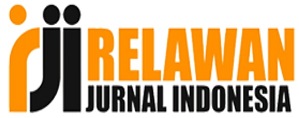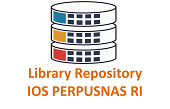Analysis Of The Effect Of Gamelan Metaverse On Acceptance Of Music Education Methods Using Technology Acceptance Model 2
Abstract
Gamelan Metaverse traditional gamelan musical instruments originating from Yogyakarta in virtual reality. The development of this VR is still relatively new, so limitations need to be identified. This research using the technology acceptance model 2 (TAM 2) method to identify factor-factor that influence acceptance of the gamelan metaverse in music classroom learning. The issue unknown factors hindering the Gamelan Metaverse towards music education as a music learning medium. The method used a deductive research method with quantitative research methods. This study focused on numbers such as quantitative data compiled using statistical analysis methods with SPSS 26 and AMOS software. The factors or variables used included perceived usefulness, intention to use, usage behavior, perceived ease of use, and mobility. The sample data recorded were 35 respondents, including active students from UAJY and ISI. The conclusion revealed that the Gamelan Metaverse has not been effective as an alternative to music education learning because it has not met the criteria in the hypothesis.
Downloads
References
[2] N. Misirlis and H. Bin Munawar, “An analysis of the technology acceptance model in understanding university students’ behavioral intention to use metaverse technologies,” pp. 159–163, 2022, [Online]. Available: https://conference.pixel-online.net/FOE/files/foe/ed0012/FP/7813-ELRN5536-FP-FOE12.pdf
[3] Y. Yulistia, “Analisis Pengaruh Efektivitas Dan Manfaat E-Commerce Terhadap Sikap Dan Perilaku Pengguna Dengan Menggunakan Metode TAM (Studi Kasus: UKM Kota Palembang),” JATISI (Jurnal Tek. Inform. dan Sist. Informasi), vol. 4, no. 1, pp. 93–100, 2017, doi: 10.35957/jatisi.v4i1.91.
[4] A. M. Aburbeian, A. Y. Owda, and M. Owda, “A Technology Acceptance Model Survey of the Metaverse Prospects,” Ai, vol. 3, no. 2, pp. 285–302, 2022, doi: 10.3390/ai3020018.
[5] J. H. Sharp, “Development, extension, and application: A review of the technology acceptance model,” Proc. Inf. Syst. Educ. Conf. ISECON, vol. 23, no. 9, 2006.
[6] lamiaa Mostafa, “Measuring Technology Acceptance Model to use Metaverse Technology in Egypt,” مجلة البحوث المالیة والتجاریة, vol. 23, no. 3, pp. 118–142, 2022, doi: 10.21608/jsst.2022.130606.1398.
[7] M. Masrom, “Technology acceptance model and E-learning,” 12th Int. Conf. Educ., no. May, pp. 21–24, 2007.
[8] F. Yang, L. Ren, and C. Gu, “A study of college students’ intention to use metaverse technology for basketball learning based on UTAUT2,” Heliyon, vol. 8, no. 9, p. e10562, 2022, doi: 10.1016/j.heliyon.2022.e10562.
[9] V. Venkatesh and F. D. Davis, “Theoretical extension of the Technology Acceptance Model: Four longitudinal field studies,” Manage. Sci., vol. 46, no. 2, pp. 186–204, 2000, doi: 10.1287/mnsc.46.2.186.11926.
[10] R. M. Kosanke, “A Study of the Application of Web 3.0 Technologies: Teachers Acceptance of Using Metaverse Learning Platforms,” pp. 1–40, 2019.
[11] A. Purwanto, I. P. Dewi, and M. A. Ramdhani, “LPPM STMIK ROSMA / Prosiding Seminar Nasional : Inovasi & Adopsi Teknologi Analisis Technology Acceptance Model dalam Menjelaskan Intensi Penggunaan Sistem E-Learning ada STIE STAN-IM Bandung,” 2022.
[12] I. O. Adeyemi and A. O. Issa, “Integrating Information System Success Model (ISSM) And Technology Acceptance Model (TAM): Proposing Students’ Satisfaction with University Web Portal Model,” Rec. Libr. J., vol. 6, no. 1, p. 69, 2020, doi: 10.20473/rlj.v6-i1.2020.69-79.
[13] M. Chuttur, “Association for Information Systems AIS Electronic Library (AISeL) Overview of the Technology Acceptance Model: Origins, Developments and Future Directions,” Work. Pap. Inf. Syst., vol. 9, no. 37, pp. 9–37, 2009.
[14] Y. Lee, K. A. Kozar, and K. R. T. Larsen, “The Technology Acceptance Model: Past, Present, and Future,” Commun. Assoc. Inf. Syst., vol. 12, no. December, 2003, doi: 10.17705/1cais.01250.
[15] R. T. Prasetio, “Analisa Manfaat dan Kemudahan Penggunaan Google Task di Lingkungan Akademik Menggunakan Metode TAM,” J. Responsif Ris. Sains dan Inform., vol. 2, no. 1, pp. 65–74, 2020, doi: 10.51977/jti.v2i1.202.
[16] N. Hunaifi, “Penerapan Metode Tam Terhadap Penerimaan Sistem Informasi Produksi Garment,” J. Inform., vol. 5, no. 2, pp. 221–227, 2018, doi: 10.31311/ji.v5i2.3701.
[17] Y. Hanike and D. Damirah, “Modifikasi Model Analisis Structural Equation Model (Sem) pada Reaksi Pasar di Perusahaan Bursa Efek Indonesia Melalui Modification Indices,” Mat. Dan Pembelajaran, vol. 6, no. 2, p. 127, 2018, doi: 10.33477/mp.v6i2.665.

This work is licensed under a Creative Commons Attribution 4.0 International License.







_uk501.png)

.2022-2026_uk200_pxl_.jpg)















.png)
3.png)


